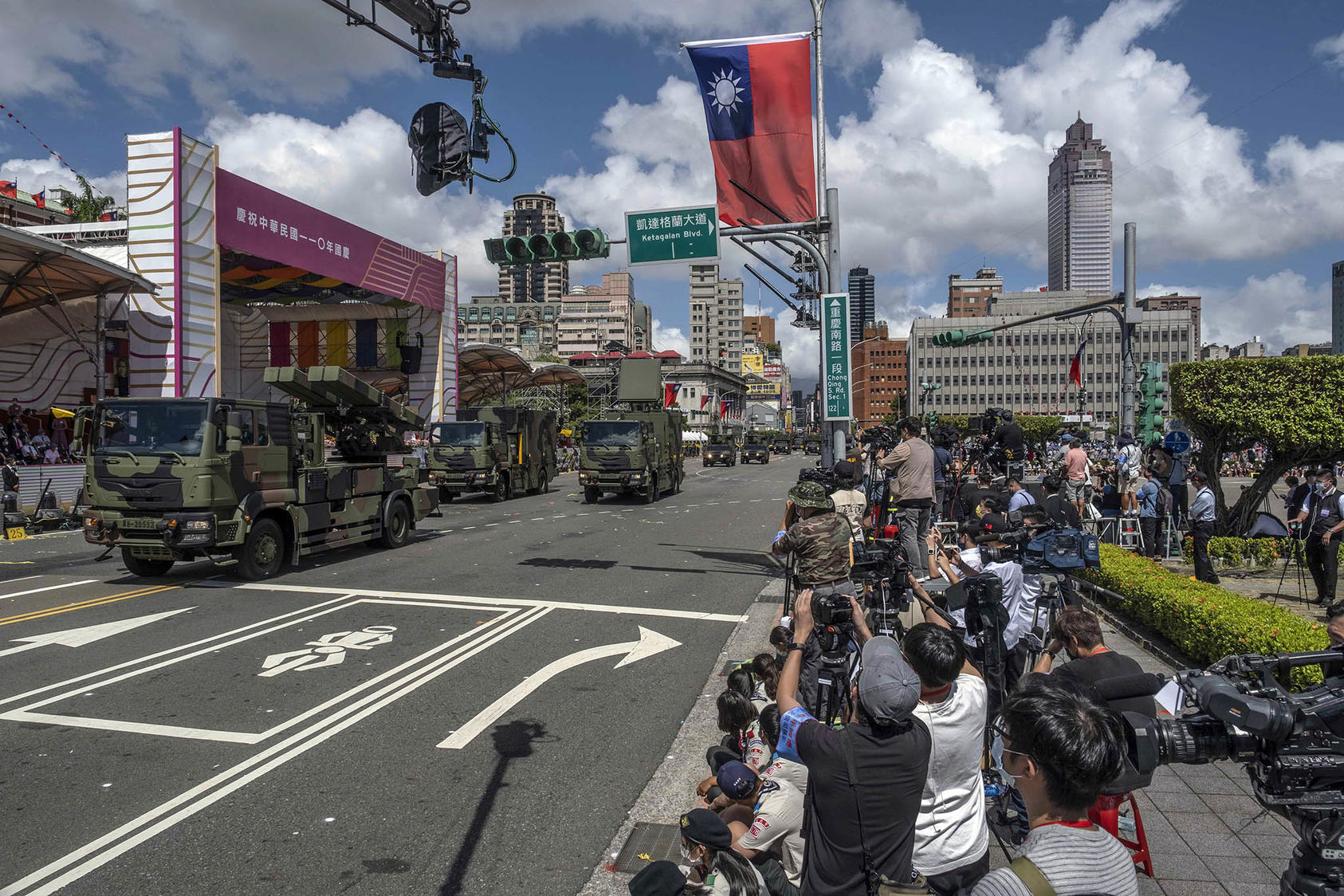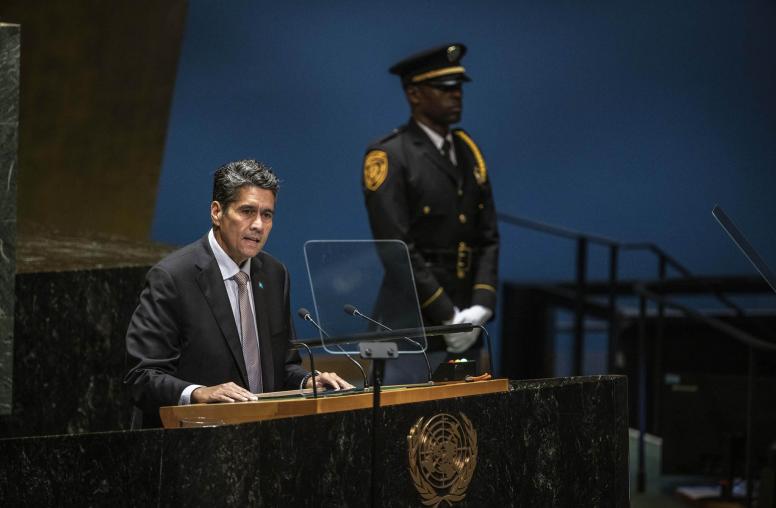How to Break the Impasse in U.S.-China Crisis Communication
The old approach to track 1 crisis-related dialogues has clearly failed — it’s time for a new way forward.
Despite the clear (and arguably growing) possibility of a future Sino-American crisis or even conflict over Taiwan or some other contentious issue and the fact that senior American and Chinese leaders have at times endorsed the need for more effective crisis avoidance interactions, little of real substance has actually been done to address the danger. Indeed, military-to-military talks have been on pause since Beijing suspended them in August 2022 after then-speaker Nancy Pelosi’s trip to Taiwan. As U.S.-China competition continues to intensify, it is critical that Washington and Beijing break this impasse by devising fresh approaches to avoid conflict altogether.

Existing crisis management mechanisms or procedures consist primarily of physical communication links between the two militaries and governments and non-binding agreements on guidelines and procedures for avoiding or de-escalating local military incidents at sea or in the air. This glaring deficiency stands in at least partial contrast with bilateral efforts taken on the track 1.5 or 2 levels, which have included years of detailed dialogues and crisis simulations between both military and civilian interlocutors designed to identify sources of crisis escalation and mechanisms and procedures for reducing the severity of possible future Sino-American crises.
This essay will briefly examine why such little progress has occurred in track 1 crisis communication talks between the United States and China, offer some ideas on how to move the dialogue forward, and look at what role track 1.5/2 talks might play in this process.
Different Systems, Cultures and Goals
Official Track 1 dialogues on virtually any security-related topic face strong political and policy limitations. Participants are almost invariably government officials or serving military officers with clear mandates to defend and advance their nation’s respective policies. Much of the emphasis in such dialogues is thus on clarifying each side’s existing military policies, reducing misperceptions and obtaining information or intelligence on the viewpoints and practices of the other side.
This leaves little opportunity for true problem solving — i.e., engaging in relatively open and flexible “what if” types of dialogues designed to explore new ways of avoiding and managing future security problems, in this case political-military crises. This is even more the case when overall trust is low and personal relationships among the participants are weak or non-existent, as at present in the Sino-American relationship. Such distrust increases the tendency to avoid speaking openly and inclines both sides to interpret the statements and actions of the other as mere propaganda or part of an overall effort to manipulate, obfuscate or mislead. As a result, official dialogues can become stale and rigid, limited largely to pre-planned talking points or efforts to extract information from the other side.
This problem is magnified by the basic differences that exist in the cultures and systems operating on each side. The Chinese system in general (and the military in particular) does not prize taking the initiative or engaging in innovative or speculative problem solving separate from the dictates of the prevailing political line. This can even affect exchanges on the track 2 level, but is particularly evident in track 1 dialogues. And it is especially evident in a low-trust environment. While the U.S. system is vastly more open and receptive to give-and-take discussions, it certainly has its limits, especially in a military forum. And it is by no means immune to political and ideological biases and constraints.
Such problems are compounded even further by the fact that Beijing and Washington hold very different views regarding the nature and purpose of crisis-related dialogues, based in large part on fundamental assumptions about each other’s intentions. The Chinese believe the United States wishes to create “crisis management” guard rails that will prevent actual conflict, thus allowing Washington to sustain or escalate its supposedly crisis-inducing behavior. Hence, Beijing is more concerned with crisis prevention, interpreted as ways of resolving a variety of provocative U.S. policies.
The United States wants to strengthen crisis management procedures and mechanisms in order to reduce the chance of a crisis escalating to high levels, and in the process possibly lower the chance of a serious crisis occurring in the first place. It of course rejects the notion that its policies are creating a crisis environment, and it wishes to avoid being drawn into a political or ideological dialogue that seeks to apportion blame. U.S. interlocutors also suspect that Beijing desires to use an emphasis on crisis prevention to maneuver the United States into making unacceptable policy changes.
As the above suggests, another difficulty obstructing effective track 1 crisis-related dialogues derives from their fundamental military structure. Historically, serious crises have been primarily viewed as military events involving incidents at sea or in the air and hence ways of avoiding or managing them addressed in a largely military context and forum. This places an artificial set of constraints on any effort to deal with what is in fact a much broader and more complex phenomenon.
While it is important to avoid or effectively manage military incidents through the development of prudent military practices at the local level, any serious crisis would almost certainly involve an escalation beyond the purely military level to involve civilian leaders and intelligence officials. Such individuals would be making the most fundamental decisions in a situation like this. Hence, their viewpoints, biases and decision-making processes should be at the core of any holistic crisis-related dialogue. Moreover, military officers or even civilian military officials simply do not have the authority or knowledge to address those fundamental policy issues relating to the broader problems involved in crisis prevention.
A Way Forward
The above features of Sino-American crisis-related interactions strongly indicate the need for Beijing and Washington to strike out in new directions if any progress is to be attained in putting in place more effective measures to avert and, if necessary, manage a future political-military crisis between them.
This will likely require: 1) a relabeling of the entire enterprise, to overcome conceptual differences regarding the goals of crisis-related communications between Beijing and Washington; 2) a primary (though not exclusive) focus on discussions of both policies and perceptions (i.e., decision-maker assumptions, beliefs, images and biases), as the source of crises and crisis escalation; 3) a basic restructuring of track 1 interactions, away from the current military-centered structure; and 4) a closer linkage between track 1 and track 1.5/2 dialogues.
1. Reassurance and Conflict Avoidance
It is clear from the above that any future crisis-related dialogue must move away from an unproductive focus on either crisis prevention or crisis management. Future dialogues should encompass both objectives, within the context of an overall emphasis on reassurance and conflict avoidance, something both sides undoubtedly support.
2. A Focus on Policies, Mechanisms and Perceptions
This requires a discussion of possible policy or procedural changes that could reduce the chance of a crisis or conflict emerging over Taiwan or other volatile issues in the relationship, as well as the crafting of procedures, mechanisms and understandings that can prevent inadvertent crisis escalation. In other words, the dialogue must focus on highlighting destabilizing policy features and potential perceptual dangers and providing credible reassurances and confidence-building measures that reduce the likelihood that either side might initiate highly provocative actions (thereby triggering a crisis) or overreact to a perceived provocation or even an accidental incident, in order to convey resolve or gain an advantage via a crisis.
3. Civilian Led
Such a broad-ranging dialogue cannot be undertaken in an official military forum, given the limits described above. It should be civilian led, involving diplomats and policy advisors, with input provided as needed by military officers and civilian leaders within each side’s military system. All civilian participants should be deeply familiar with the crisis decision-making process within their own government, as well as those basic attitudes and beliefs of their political leadership that would most influence crisis behavior.
4. Track 1.5/2 Testing
The above somewhat radical changes in the overall purpose, content and structure of a future track 1 crisis dialogue are unlikely to be accepted by either government without considerable prior discussion and some reassurances provided. This can only occur in the more flexible and open environment of a track 1.5/2 dialogue. As indicated above, while still limited in some respects by the same factors that obstruct track 1 dialogues, they nonetheless have shown that a very strong desire exists at the unofficial level to explore ways to reduce dangerous behavior on both sides. But to be successful as a means of feeding into any future track 1 discussion, the participants in such a dialogue should have close links with relevant authorities within each government and military, and adjust their dialogue in response to the reactions and needs of those authorities.
Conclusion
There is certainly no guarantee that the above actions will be considered seriously, must less adopted, by either side, or that, if adopted, will produce effective measures for averting and/or managing a future Sino-American crisis. The existing suspicions and assumptions obstructing any substantive Sino-American track 1 crisis-related dialogue are by now deep-rooted, and some are simply inherent in the nature of an official dialogue, as indicated. And track 1.5/2 dialogues also have their limitations, as noted.
That said, the old approach to track 1 crisis-related dialogues has clearly failed to produce significant progress, and waiting for a serious crisis to occur in order to provoke such progress might prove too late. Both sides need to approach this critical issue in new ways to move forward.
Michael D. Swaine is a senior research fellow at the Quincy Institute for Responsible Statecraft.



